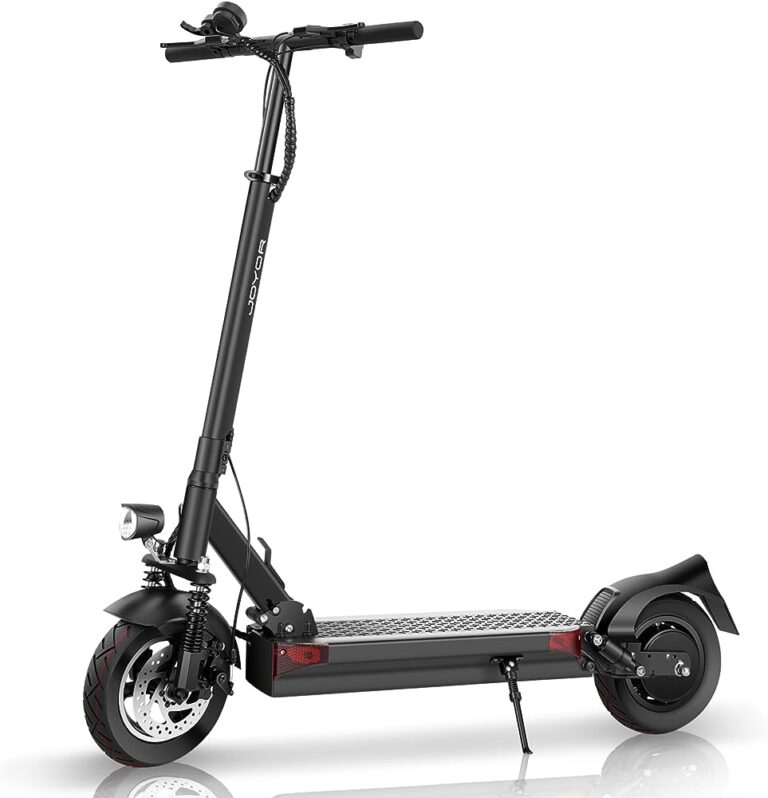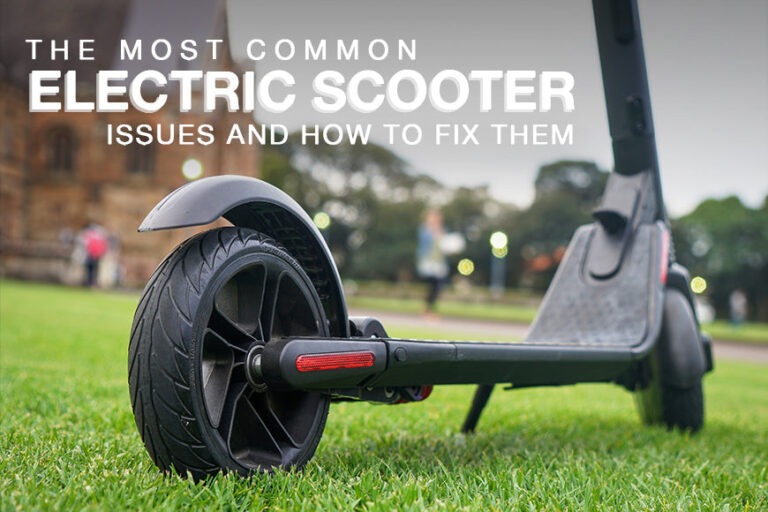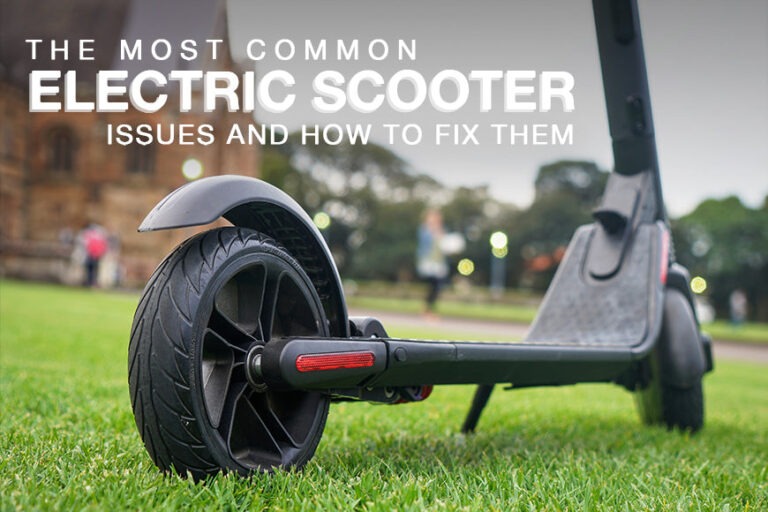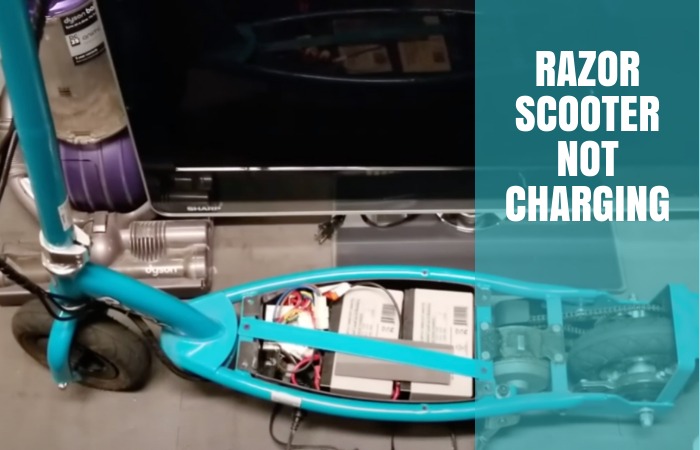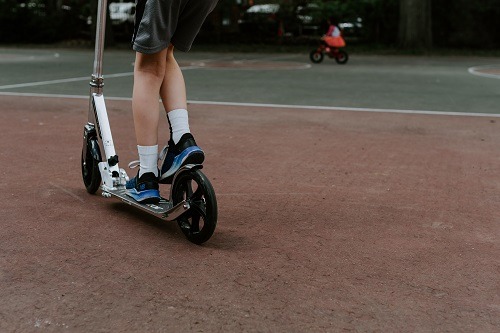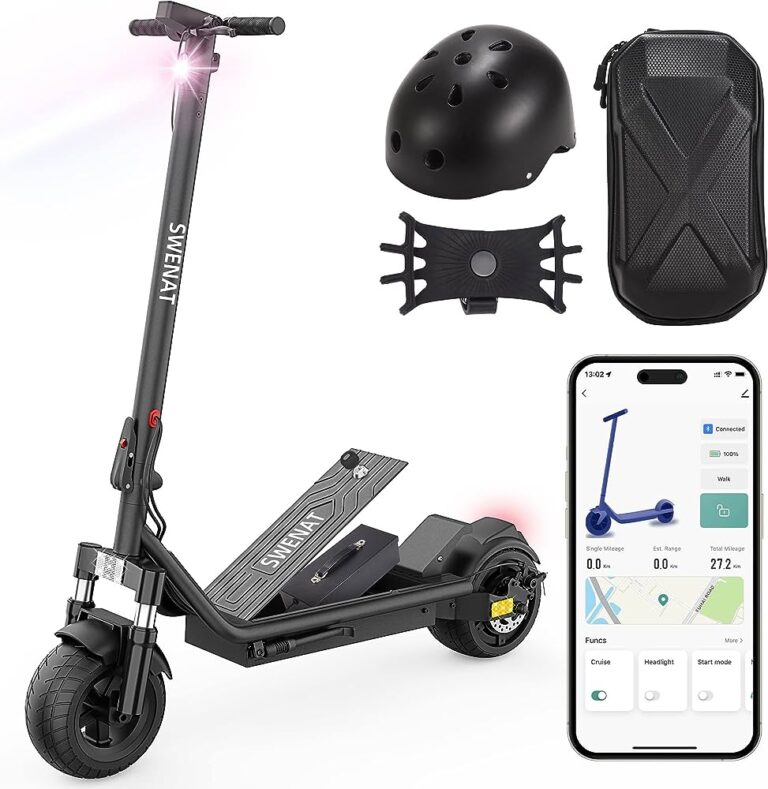Revamp Your Ride: How to Recover a Scooter Seat
To recover a scooter seat, you will need to remove the existing seat cover and foam, prepare the new foam and cover, and then attach them securely to the seat frame. With the increasing popularity of scooters as a convenient mode of transportation, it’s important to ensure their comfort and functionality.
One of the key components in ensuring a comfortable ride is the scooter seat. However, over time, the seat cover may get worn-out or damaged, compromising the overall comfort and aesthetics. Fortunately, recovering a scooter seat is a relatively simple process that can be done by following a few steps.
We will guide you through the process of recovering a scooter seat, enabling you to restore its comfort and appearance without the need for professional assistance. So, let’s dive in and discover how to recover a scooter seat in easy-to-follow steps.
Preparing For The Project
Looking to recover your scooter seat? Find out how to prepare for this project with these easy-to-follow steps.
Assessing The Condition Of Your Scooter Seat
- Check for any visible damage such as tears, rips, or holes in the seat cover.
- Assess the overall condition of the seat foam for any signs of wear or deterioration.
- Consider if the seat needs any repairs or replacements before recovering.
Gathering The Necessary Tools And Materials
- Staple remover: Used to remove the current seat cover and staples.
- Pliers: Helpful for any stubborn staples that may be difficult to remove.
- Upholstery fabric: Choose a fabric that is suitable for outdoor use, durable, and water-resistant.
- Scissors: Used to cut the fabric to the correct size and shape.
- Spray adhesive: Helps to secure the fabric to the seat foam.
- Staple gun: Necessary for stapling the fabric onto the seat base.
- Upholstery foam: Consider replacing the seat foam if it is worn or uncomfortable.
- Measuring tape: Ensure accurate measurements for cutting the fabric.
- Marker or chalk: Used to mark the fabric for cutting and aligning patterns.
- Safety goggles and gloves: Protect yourself from any potential injuries during the project.
Choosing the Right Upholstery Fabric:
- Consider the durability and suitability of the fabric for outdoor use, as scooters are often exposed to the elements.
- Opt for water-resistant or waterproof fabrics to prevent moisture damage.
- Select a fabric that matches your style, preference, and the overall aesthetics of your scooter.
- Check for any care instructions or maintenance requirements for the chosen fabric.
By assessing the condition of your scooter seat, gathering the necessary tools and materials, and choosing the right upholstery fabric, you are prepared to recover your scooter seat successfully.
Removing The Old Seat Cover
To recover a scooter seat, the first step is to remove the old seat cover. This can be done by carefully detaching and pulling off the existing cover, preparing the seat for the new cover.
Removing The Seat From The Scooter:
To kickstart the process of recovering your scooter seat, the first step is removing the seat itself. This will provide you with easy access to the old seat cover, allowing you to remove it without any hindrance. Follow these simple steps to detach the seat from your scooter:
- Locate the bolts or screws: Depending on the scooter model, you’ll find bolts or screws holding the seat in place. Look underneath the seat to identify these fasteners.
- Unscrew or remove the bolts: Using an appropriate wrench or screwdriver, carefully unscrew or remove the bolts securing the seat to the scooter’s frame. Keep these bolts in a safe place to avoid misplacing them.
- Detach any additional attachments: Some scooters may have additional attachments, such as brackets or hooks, holding the seat in place. Inspect the seat carefully and detach any extra fixtures before proceeding.
Peeling Off The Existing Upholstery:
Now that the seat is properly removed from the scooter, you can proceed to remove the old seat cover. Follow these steps to effectively peel off the existing upholstery:
- Identify the edges: Examine the edges of the seat to locate any visible seams or edges of the old seat cover. This will be your starting point for peeling off the upholstery.
- Gently lift the seat cover: Using your fingers or a flat-edged tool, carefully lift a small section of the old seat cover. Start at the identified edge and raise it gradually, ensuring not to damage the foam underneath.
- Continue peeling the cover: Once you have lifted a section of the seat cover, continue pulling it off gradually. Take your time and be cautious not to tear or rip the material.
- Remove any adhesive: In some cases, the old seat cover may be attached to the foam with adhesive. If you encounter any sticky residue, use a suitable adhesive remover to dissolve it and ease the removal process.
Removing Stubborn Staples Or Tacks:
During the process of removing the old seat cover, you might come across stubborn staples or tacks that require extra effort to be removed. Follow these steps to handle these challenging fasteners:
- Use pliers or a staple remover: Grasp the stubborn staple or tack firmly with a pair of pliers or use a specialized staple remover tool to grip and extract it.
- Apply gentle pressure: While using the pliers or staple remover, apply consistent but gentle pressure to prevent damaging the foam or the seat frame.
- Take your time: Removing stubborn staples or tacks can be time-consuming and may require patience. Work meticulously to ensure the old seat cover is completely free of any fasteners.
By following these instructions, you will successfully remove the old seat cover from your scooter and be one step closer to recovering it with a brand new, revitalized upholstery.
Installing The New Seat Cover
Learn how to easily recover your scooter seat by installing a new seat cover. Follow these simple steps to give your scooter a fresh and stylish look.
Once you have prepared the fabric, it’s time to install the new seat cover. This process may seem daunting, but with the right steps, you can achieve a professional-looking result. Follow the steps below to ensure a successful installation.
Preparing The Fabric For Installation
To prepare the fabric for installation, follow these steps:
- Lay the fabric flat and smooth out any wrinkles or creases.
- Ensure that the fabric is the correct size and shape for your scooter seat.
- If needed, trim any excess fabric using fabric scissors for a precise fit.
- Consider pre-washing the fabric to prevent any shrinkage or color bleeding.
Securing The Fabric To The Seat Base
To secure the fabric to the seat base, follow these steps:
- Position the fabric over the seat base, ensuring it is centered and aligned properly.
- Start by securing one side of the fabric to the seat base using upholstery staples or adhesive.
- Work your way around the seat, pulling the fabric taut and securing it in place.
- Place staples or adhesive approximately every inch to ensure a tight and secure fit.
Stretching And Tucking The Fabric For A Professional Look
To achieve a professional look, follow these steps:
- Use your hands to stretch the fabric evenly across the seat, removing any wrinkles.
- Tuck the excess fabric neatly into the gaps between the seat and the seat base.
- Pay attention to corners and curves, ensuring the fabric is smooth and tightly secured.
- Use a staple remover tool to adjust any misplaced or loose staples, providing a clean finish.
By following these steps, you can successfully install a new seat cover on your scooter. Remember to take your time and maintain precision throughout the process. With a little patience and effort, you’ll have a scooter seat that looks as good as new.
Adding Finishing Touches
Recover your worn-out scooter seat with these simple tips, adding the perfect finishing touches for a refreshed and comfortable ride.
Once you have successfully recovered your scooter seat, it’s time to add the finishing touches to ensure a polished and professional look. Follow these steps to give your seat that final touch:
Trimming Excess Fabric For A Neat Appearance
- Carefully inspect the recovered seat for any excess fabric that may be sticking out or causing uneven edges.
- Use sharp fabric scissors to trim the excess fabric, creating clean and neat edges.
- Take your time and make small, precise cuts to avoid accidentally cutting too much fabric.
- Once you have trimmed all the excess fabric, examine the seat again to ensure a tidy and well-finished appearance.
Reattaching The Seat To The Scooter
- Align the recovered seat with the original attachment points on your scooter.
- Gently press the seat down onto the scooter, making sure it is securely in place.
- If your seat has any metal brackets or fasteners, carefully attach them according to the manufacturer’s instructions.
- Double-check that the seat is securely attached, especially if your scooter has a lock or latch mechanism.
- Once the seat is properly reattached, give it a gentle tug to ensure it is secure and won’t come loose during rides.
Cleaning And Maintaining Your Newly Recovered Seat
- After completing the recovery process, give your seat a thorough cleaning to remove any dust or debris that may have accumulated.
- Use a mild soapy solution and a soft cloth or sponge to gently wipe down the entire surface of the seat.
- Rinse the seat with clean water and allow it to air dry completely before using.
- To maintain the appearance and longevity of your recovered seat, regularly clean it with a mild soap and water solution.
- Avoid using harsh chemicals or abrasive cleaners that may damage the fabric or underlying materials.
- Consider applying a fabric protectant spray to help repel stains and extend the life of your recovered seat.
By following these simple steps, you can add those finishing touches to your newly recovered scooter seat, ensuring a neat appearance, secure attachment, and proper maintenance for years to come. Enjoy your rides with confidence and style!
Troubleshooting And Tips
Recover your scooter seat like a pro with these troubleshooting tips and tricks. Get your seat looking brand new again in no time.
Recovering a scooter seat can be a rewarding DIY project, allowing you to revamp your scooter’s appearance and comfort. However, like any project, it can come with its fair share of challenges. In this section, we’ll address common challenges that may arise during the recovery process and provide you with some troubleshooting tips.
Additionally, we’ll share valuable tips on choosing a durable and weather-resistant fabric, as well as enhancing the comfort and style of your scooter seat.
Dealing With Common Challenges During The Recovery Process:
- Wrinkles and creases: If you notice wrinkles or creases on the fabric after recovering the scooter seat, try using a fabric steamer or a handheld steam iron to gently smooth them out. Be cautious not to direct the steam directly onto the foam as it may get damaged.
- Insufficient fabric: Running out of fabric while recovering the seat can be frustrating. To avoid this issue, measure the seat accurately and add some extra inches to ensure you have enough fabric to cover the entire seat. It’s better to have some leftover fabric than running short.
- Misaligning patterns: When working with patterned fabric, it’s essential to align the pattern correctly. To prevent misalignment, carefully mark the pattern on the fabric before cutting and align it correctly before securing it to the seat. Take your time and double-check the alignment to achieve a visually pleasing result.
- Difficulty securing the fabric: Sometimes, getting the fabric tightly secured to the seat can be challenging. Consider using a staple gun specifically designed for upholstery projects to ensure a secure fit. Start by stapling the fabric in the middle of each side and then work your way outwards. This approach will help distribute the tension evenly and reduce the chances of wrinkles.
Tips for Choosing a Durable and Weather-resistant Fabric:
- Opt for outdoor or marine-grade fabrics: These types of fabrics are specifically designed to withstand various weather conditions, including exposure to sunlight, moisture, and temperature fluctuations. They often come with added features such as UV resistance and waterproof properties, ensuring longevity and better protection for your scooter seat.
- Look for fabrics with high abrasion resistance: Since scooter seats are prone to constant use and friction, it’s essential to choose a fabric with high abrasion resistance. Fabrics with tightly woven constructions and synthetic fibers such as nylon or polyester tend to have better durability.
- Consider a stain-resistant fabric: Accidents happen, and spills may occur on your scooter seat. Choosing a fabric with stain-resistant properties can make cleanup easier and prevent permanent staining. Look for fabrics treated with stain repellents or those that have inherent stain resistance features.
Enhancing the Comfort and Style of Your Scooter Seat:
- Add extra foam padding: If your scooter seat lacks sufficient cushioning or support, consider adding extra foam padding. This simple addition can significantly enhance the comfort of your seat, ensuring you enjoy a smoother and more enjoyable ride.
- Explore decorative options: Recovering your scooter seat presents an opportunity to inject some personal style into your ride. Consider using contrasting fabric piping or decorative stitching to add visual interest and create a unique look. Don’t be afraid to let your creativity shine!
- Use a non-slip seat cover: To prevent yourself from sliding around on the seat, especially during rainy conditions, consider using a non-slip seat cover. These covers are designed with materials that provide a better grip, ensuring you stay in place while riding.
Recovering a scooter seat is a fantastic way to breathe new life into your scooter, making it more visually appealing and comfortable. By following these troubleshooting tips, choosing a durable fabric, and exploring enhancement options, you’re well on your way to transforming your scooter seat into a stylish and enjoyable accessory.
So, roll up your sleeves and get ready to revamp your scooter seat with confidence!

Credit: www.nytimes.com
Final Thoughts
Recovering a scooter seat is a simple process that can be done with a few basic tools and materials. With careful attention to detail, you can have your scooter seat looking brand new in no time.
Are you ready to give your scooter a fresh new look? Recovering the seat is a simple yet effective way to revamp your ride and make it more comfortable. In this final section, we’ll cover some key points to remember as you enjoy your revamped scooter experience.
Enjoying Your Revamped Scooter Ride:
- Comfortable riding experience: The new seat cover not only gives your scooter a stylish appearance but also enhances your comfort during rides. You’ll feel more at ease and enjoy smoother rides.
- Durability and longevity: Investing in a high-quality seat cover ensures that it will last for a long time. You won’t have to worry about wear and tear, as the material used in seat covers is designed to withstand various weather conditions.
- Personalization: Recovering your scooter seat allows you to personalize your ride according to your preferences. Choose a color and design that reflects your style and personality.
- Easy maintenance: Cleaning and maintaining a recovered seat is a breeze. Most seat covers are designed to be easily cleaned with a damp cloth or mild soap. This will help keep your scooter looking fresh for years to come.
- Increased value: If you ever decide to sell or upgrade your scooter, a well-maintained and recovered seat can add value to your vehicle. Potential buyers will appreciate the attention to detail and overall aesthetics.
As you take your newly recovered scooter seat out for a spin, remember to enjoy the enhanced comfort, durability, and personalization it offers. Cherish the improved riding experience and the extra value it brings to your scooter.
Frequently Asked Questions Of How To Recover A Scooter Seat
What Is The Best Fabric To Reupholster A Motorcycle Seat?
The best fabric to reupholster a motorcycle seat is durable vinyl or leather.
How To Reupholster Your Own Motorcycle Seat?
To reupholster your motorcycle seat, follow these steps: 1. Remove the old seat cover carefully. 2. Measure and cut the new upholstery material to fit your seat. 3. Use a staple gun to attach the material securely to the seat. 4.
Smooth out any wrinkles and trim the excess fabric. Remember to take precautions and be patient throughout the process.
How Can I Make My Scooter Seat More Comfortable?
To make your scooter seat more comfortable, consider adding a cushion or seat cover for extra padding.
What Kind Of Foam Do You Use For Motorcycle Seats?
We use high-quality foam specifically designed for motorcycle seats.
Conclusion
Recovering a scooter seat is a simple and cost-effective way to refresh the look of your scooter and increase its overall comfort. By following the steps outlined in this blog post, you can successfully recover a scooter seat without the need for professional help.
Start by gathering the necessary materials and removing the old seat cover. Take your time when measuring and cutting the new fabric, ensuring a perfect fit. Use a staple gun to attach the new cover to the seat, making sure it is taut and secure.
Finally, reattach the seat to your scooter and admire your handiwork. Not only is recovering a scooter seat a fun and rewarding DIY project, but it can also extend the lifespan of your scooter and give it a fresh, updated look.
So, don’t hesitate to give it a try – you’ll be pleasantly surprised with the results!

